1799 – George Washington, the American revolutionary leader and first president of the United States, died at his estate in Mount Vernon, Virginia. He was 67 years old. The cause of his death has been the subject of debate since the day he died — and I’m sorry but there is no way to make this “short”.
On December 12, Washington was out on horseback supervising farming activities from late morning until three in the afternoon. The weather shifted from light snow to hail and then to rain. Upon Washington’s return it was suggested that he change out of his wet riding clothes before dinner. Known for his punctuality, Washington chose to remain in his damp attire.
The next morning brought three inches of snow and a sore throat. Despite feeling very weak, Washington went to the hanging wood area on the east side of the property to select trees for removal. Throughout the day it was observed that Washington’s voice became increasingly hoarse.
He awoke at 2:00 in the morning of the 14th, clutching his chest with a profound shortness of breath. His chief aide, Col.Tobias Lear, immediately sent for Dr. James Craik, who had been Washington’s physician for more than 40 years, and the estate’s overseer, George Rawlins.
At 7:30 a.m., Rawlins – well practiced in the “art” of bloodletting – removed 12 ounces of blood. Following the procedure, Col. Lear administered a tonic of molasses, butter and vinegar, which nearly choked Washington to death. At 9:30 a.m., at Washington’s request, another 18 ounces of blood was withdrawn followed by a withdrawal of yes, another 18 ounces at 11 a.m. At noon, an enema was administered.
Dr. Craik ordered another bleeding. This time, 32 ounces were removed even though Elisha Cullen Dick, the second physician to arrive at Mount Vernon, objected. A third doctor, Gustavus Richard Brown, made it to the mansion at 4 p.m. He suggested a dose of calomel and a tartar emetic guaranteed to make the former president vomit with a vengeance.
At 10 p.m., Washington murmured some last words about burial instructions to Col. Lear. Twenty minutes later, the former president settled back in his bed and calmly took his pulse. At the very end, Washington’s fingers dropped off his wrist and took his final breath.
If you haven’t been keeping track, Washington’s physicians withdrew 80 ounces of his blood (or 40 percent of his total blood volume) over a 12-hour period. For decades thereafter, critics complained that the physicians bled Washington to death. But the truth of the matter is that they did the best they could, using now antiquated and discredited theories of medical practice.
His friend Henry Lee provided a famous eulogy for the father of the United States: “First in war, first in peace, and first in the hearts of his countrymen.”

1863 – President Abraham Lincoln announced a grant of amnesty for Emilie Todd Helm. Helm was Mary Lincoln’s half sister and the widow of Confederate general Benjamin Helm. The pardon was one of the first under Lincoln’s Proclamation of Amnesty and Reconstruction, which he had announced less than a week before. The plan was the president’s blueprint for the reintegration of the South into the Union.
After her husband’s death at the Battle of Chickamauga, Emilie Helm made her way through Union lines to Washington, D.C. She briefly stayed in the White House and after accepting Lincoln’s pardon, Helm returned to her native Kentucky.

1909 – Workers placed the last of the 3.2 million 10-pound bricks that pave the Indianapolis Motor Speedway in Speedway, Indiana (a town surrounded by the city of Indianapolis). Since then, most of that brick has been buried under asphalt, but one yard remains exposed at the start-finish line. Kissing those bricks after a successful race remains a tradition among Indy drivers.
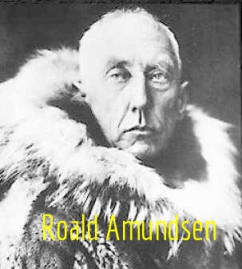
1911 – Norwegian Roald Amundsen became the first explorer to reach the South Pole, beating his British rival, Robert Falcon Scott. In early 1911, Amundsen sailed his ship into Antarctica’s Bay of Whales and set up base camp 60 miles closer to the pole than Scott. In October, both explorers set off – Amundsen using sleigh dogs, and Scott employing Siberian motor sledges, Siberian ponies, and dogs.
Amundsen won the race but Scott’s expedition was less fortunate in several other ways. The motor sleds broke down, the ponies had to be shot, and the dog teams were sent back as Scott and four companions continued on foot. On January 18, 1912, they reached the pole only to find that Amundsen had preceded them by over a month. Weather on the return journey was exceptionally bad – two members perished – and a storm later trapped Scott and the other two survivors in their tent only 11 miles from their base camp. Scott’s frozen body was found later that year.

1920 – George Gipp, one of the most versatile athletes to play football for Notre Dame, died of a streptococcal throat infection at the age of 25. It was on his hospital bed that he is purported to have delivered the famous “win just one for the Gipper” line to Notre Dame coach Knute Rockne.
“I’ve got to go, Rock. It’s all right. I’m not afraid. Some time, Rock, when the team is up against it, when things are wrong and the breaks are beating the boys, ask them to go in there with all they’ve got and win just one for the Gipper. I don’t know where I’ll be then, Rock. But I’ll know about it, and I’ll be happy.”
Rockne used the story of Gipp, along with the deathbed line that he attributed to Gipp, to rally his team to a 12-6 upset of the previously undefeated Army team of 1928. The veracity of the story remains questionable, but it remains in the minds of many – especially fans of Notre Dame football – as absolute fact.
1961 – In a public exchange of letters with South Vietnamese President Ngo Dinh Diem, President John F. Kennedy formally announced that the United States would increase aid to South Vietnam, which would include the expansion of the U.S. troop commitment. Kennedy, concerned with the recent advances made by the communist insurgency movement in South Vietnam wrote, “We shall promptly increase our assistance to your defense effort.”
In return for the support, Kennedy requested that Diem liberalize his regime and institute land reform and other measures to win the support of his people. Diem initially refused, but consented when he was threatened with a reduction in the promised aid. In the long run, however, his reforms did not go far enough and the increased American aid proved insufficient in stemming the tide of the insurgency.
Diem was murdered during a coup by his own generals in November 1963. Shortly thereafter, Kennedy was assassinated. At the time of his death, there were more than 16,000 U.S. advisers in South Vietnam. Kennedy’s successor, Lyndon B. Johnson, rapidly escalated the war, which resulted in the commitment of U.S. ground forces and eventually more than 500,000 American troops in Vietnam.
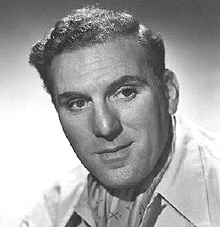
1964 – Actor William Bendix (The Babe Ruth Story, A Connecticut Yankee in King Arthur’s Court, Wake Island, for which he eared an Academy Award nomination for Best Supporting Actor, and best remembered for his role of Chester A. Riley on television’s The Life Of Riley) died of lobar pneumonia at the age of 58.
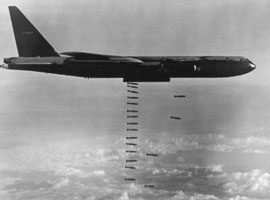
1964 – Operation Barrel Roll, the name given to the first phase of the bombing plan approved by President Lyndon B. Johnson on December 1, began with U.S. planes attacking “targets of opportunity” in northern Laos.
The North Vietnamese used Ho Chi Ming Trail network – which ran out of North Vietnam through Laos and south along the South Vietnamese-Cambodian border – as the main avenue by which they supplied and reinforced their troops in South Vietnam. Operations Steel Tiger and Tiger Hound were initiated in April and December 1965 respectively to bomb the trail in an intensive and protracted attempt to stop the massive amounts of men and supplies moving along the corridor.
By 1973, when Operations Barrel Roll, Steel Tiger, and Tiger Hound were terminated, Laos had become the most heavily bombed country in the world. During these operations, allied aircraft dropped more than 3 million tons of bombs, three times the amount dropped on North Vietnam. U.S. spending for these bombing campaigns was 10 times that of the Laotian national budget.

1971 – Dick Tiger, former Middleweight and Light-Heavyweight boxing champion, died of liver cancer at the age of 42.

1977 – Saturday Night Fever, a pop-cultural juggernaut, had its world premiere at Mann’s Chinese Theater in Los Angeles.
1980 – A CIA report claimed the Soviet Union delivered nearly $7 billion worth of military assistance to Third World nations in 1979, and made over $8 billion in arms sales during that same year. The study also noted that there were nearly 51,000 communist military advisors in Third World countries. The report indicated that the arms sales increased instability and chances for military conflict.
The report failed to investigate the impact of the $6 billion in arms sales the U.S. made to the Third World..

1980 – Elston Howard, 12-time American League All-Star catcher with the New York Yankees, died of myocarditis at the age of 51.

1985 – Roger Maris, who broke Babe Ruth’s Major League Baseball record for home runs in a single season when he hit 61 in 1961, died from Hodgkin’s lymphoma at the age of 51.
Personal Opinion:Although Maris’ record has since been surpassed by several players (in the steroids era), I still consider his 61 to be the legitimate mark.

1993 – Actress Myrna Loy (The Thin Man, The Best Years Of Our Lives, The Rains Came) died at the age of 88.
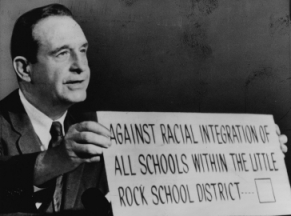
1994 – Orval Faubus, former Governor of Arkansas from 1955 to 1967, died of prostate cancer at the age of 84. Faubus was best known for his 1957 stand against the desegregation of the Little Rock School District during the Little Rock Crisis, in which he defied a unanimous decision of the United States Supreme Court by ordering the Arkansas National Guard to stop black students from attending Little Rock Central High School.

1998 – Actor Norman Fell (character actor in many films but best known for his work on television’s Three’s Company and The Ropers) died of cancer at the age of 74.

2012 – Adam Lanza, a 20-year-old man, shot and killed his mother at their Newtown, Connecticut home, then drove to nearby Sandy Hook Elementary School, where he killed 20 first graders and six school employees before turning a gun on himself.
Investigators determined that Lanza, who had attended Sandy Hook as a boy, acted alone in planning and carrying out the attack, but they were unable to find a motive for his actions or discover why he had targeted Sandy Hook. In November 2013, the Connecticut State Attorney released a report noting that Lanza had “significant mental health issues that affected his ability to live a normal life and to interact with others.” However, mental-health professionals who had worked with him “did not see anything that would have predicted his future behavior,” according to the report.
The Sandy Hook tragedy was the second-deadliest mass-shooting in the United States, following the 2007 shooting at Virginia Tech, in which a gunman killed 32 students and teachers before committing suicide.
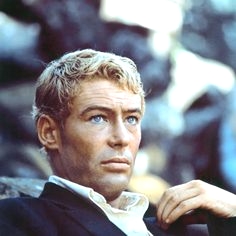
2013 – Actor Peter O’Toole (eight Academy Award nominations: Lawrence of Arabia , Becket, The Lion In Winter, Goodbye, Mr. Chips, The Ruling Class, The Stunt Man, My Favorite Year and Venus — without ever winning) died at the age of 81.

2014 – Bess Myerson, winner of the Miss America pageant in 1945, and later a television personality before becoming the first Commissioner of the New York City Department of Consumer Affairs, died at the age of 90.
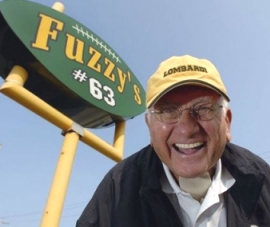
2014 – Fred “Fuzzy” Thurston, offensive lineman for the Green Bay Packers, one of only three players in pro football history to play on six championship teams, and a member of the Packers Hall of Fame, died at the age of 80 after a long battle with cancer and Alzheimer’s disease.
Compiled by Ray Lemire ©2015 RayLemire.com. All Rights Reserved.
Ray,
Thanks for the story about the ” Gipper”. I’ve always wondered where that saying came from.
As always, thank YOU for reading the article 🙂